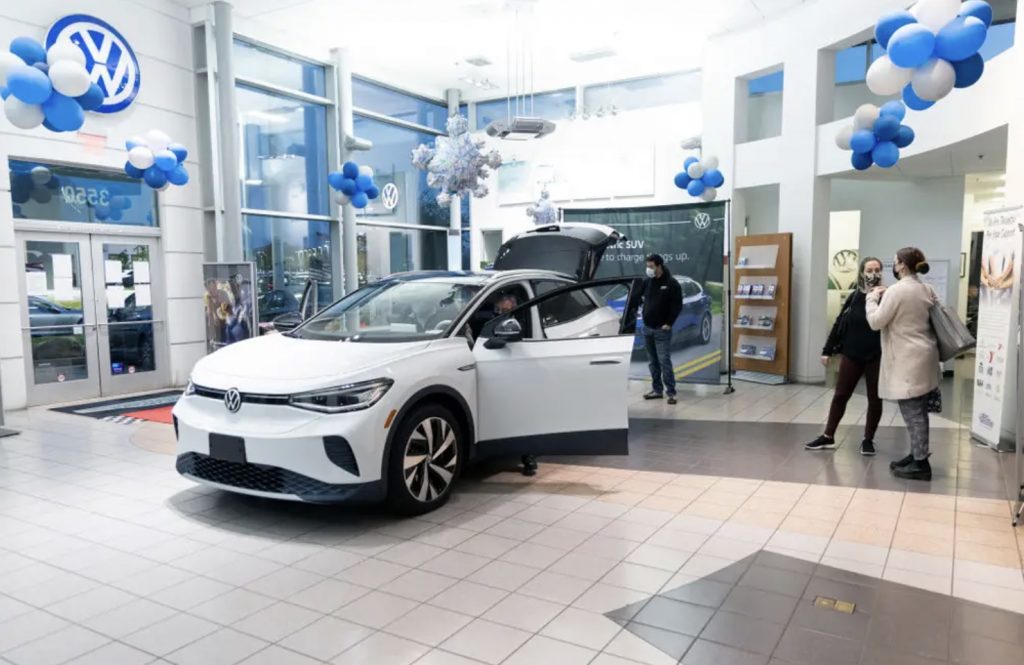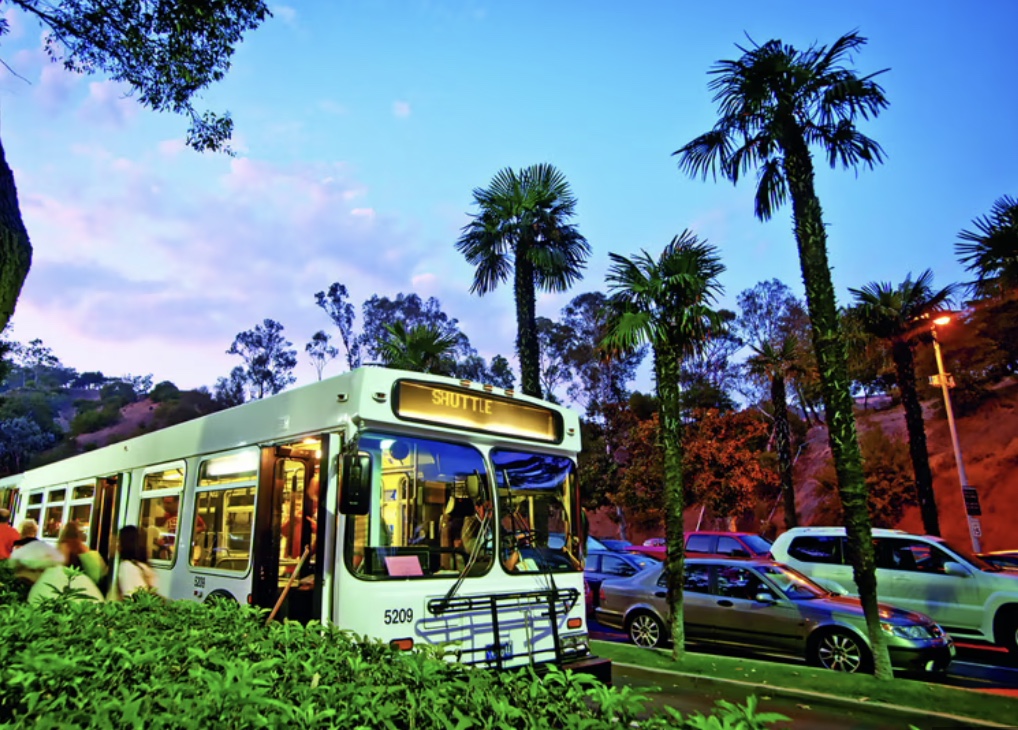
Makers of electric passenger vehicles are continuing to experience the reality of being in the auto market. Car shoppers want to see purchase prices come down, which is happening; and they also want to see range and infrastructure increase.
That comes from Kelley Blue Book (KBB), along with the following sales figures for battery electric vehicles in the U.S. While 2023 sales grew by leaps and bounds overall, this year is seeing much more conservative gains. The U.S. market saw 268,909 EVs in the first quarter of 2024 — 2.6% more than in the first quarter of last year. But that’s down from a 46.4% growth rate for Q1 2023 vs. Q1 2023.
The volume started softening in Q4 2023. The Cox Automotive Economic and Industry Insights team reported that EV sales in Q4 were higher than in Q3 by roughly 5,000 units. Cox Automotive (KBB’s parent company) expects that growth to continue this year through more new EV product, more incentives, more inventory, more leasing, and more infrastructure. If all this happens, it could lead to the share increase going up to 10% this year for battery electric vehicles. That forecast, which came out on January 9, could come down later this year with such a decrease in first quarter results.
Nearly 1.2 million (1,189,051) new EVs were sold in the U.S. in 2023. That made up about 7.6% of the domestic market last year. It was up from 5.9% of the market in 2022, and represented a 46% increase in EV sales during 2023.
Plug-in hybrids reached record sales in 2023, with more than 250,000 new vehicles sold, or about 20% of total plug-in vehicle sales, according to the U.S. Department of Energy. Plug-in hybrids made up slightly less than 2% of the total U.S. market last year.
The combined market share of hybrids, plug-in hybrids, and EVs rose to 16.3% of total light-duty vehicle sales in the U.S., up from 12.9% in 2022. Non-plug-in hybrids make up a slightly larger share of those sales than EVs do, coming in just under 8% of the total market. Hybrids have been seeing their sales increase over the past two years.
KBB’s three factors (price, range, and infrastructure) comes from polls and studies. It also comes from Tesla continuing to lead the way in price cuts — as the company continues to grow and become a more mainstream part of the U.S. and global auto market. As we all know, market share continues to be the leading bragging factor for global automakers to their shareholders; no matter what the cost might be for factory and management employees who see more job cuts coming so that profits and market share continue to rise.
Tesla’s average transaction price was $52,315 in Q1, down roughly 13.5% year over year according toe KBB. Competitors are following Tesla’s lead and cutting prices. Automakers and dealers are also advertising incentives even more to stand out in the market.
Leasing is helping out
Leasing is another incentive being offered with monthly payments coming down for consumers. In the first quarter, about 27% of all EVs were leased — more than daub le the year before. Several EV models qualify for the $7,500 federal tax credit rebate when leased; and far fewer qualify when purchased outright, according to KBB.
The Tesla Model Y continues to see sales gains at 96,729 units sold in the U.S. during the first quarter compared to its 394,497 total units sold last year. The Tesla Model 3 and Tesla Model X, while both in the top 10, are down compared to the rate they were selling at last year. Earlier this month, Tesla announced a decline in quarterly deliveries for the first time in nearly four years.
As for models doing well, the Rivian R1S, an SUV, sold 8,017 units in the first quarter compared to 24,783 in 2023; and when compared to the 7,946 units sold during Q1 2023 for all its models. The model climbed up to No. 4 in EVs sold in the U.S. during the first quarter, following the Ford Mustang Mach-E.
The Hyundai Ioniq 5 has been getting a lot of accolades, but it’s sales aren’t impressive. The company sold 6,822 units in Q1 compared to 33,918 for the year. However, the South Korean automaker is certainly pleased to see that its overall EV sales shot up 62% in the quarter versus that same quarter a year ago.
One method that has been working well for Hyundai and its Kia division is that leasing offers are helping quite a bit. While the fact that they’re not made in the U.S. kept them out of the $7,500 incentive from the Inflation Reduction Act. But Hyundai and Kia took a strong approach in making lease offers to take advantage of that loophole and it is paying off.
And in other news………..
EPA rules challenged in court: Republican attorneys general from 25 states sued the Environmental Protection Agency today to challenge the passenger vehicle emissions rules finalized on March 20 in the White House. The suit alleges that the EPA exceeded its legal authority when making those rules. Those state attorneys general are from Alabama, Alaska, Arkansas, Florida, Georgia, Idaho, Indiana, Iowa, Kansas, Kentucky, Louisiana, Mississippi, Missouri, Montana, Nebraska, New Hampshire, North Dakota, Ohio, Oklahoma, South Carolina, South Dakota, Utah, Virginia, West Virginia, and Wyoming. The suit was filed by attorneys general from states led by Kentucky and West Virginia in the U.S. Court of Appeals for the District of Columbia Circuit.
More on robotaxis: Tesla CEO Elon Musk’s April 5 announcement that the company will unveil a robotaxi on August 8 has been stirring up a lot more discussions on that new mobility service. General Motors’ Cruise is redeploying robotaxis in Phoenix after nearly five months of paused operations, the company recently said in a blog post. The cars will be in “manual mode,” so they won’t be driving themselves, to address safety concerns coming out of the incident last year in San Francisco where a pedestrian was stuck under and dragged by a Cruise robotaxi. The pedestrian had some injuries but survived the incident. The city is closely watching Cruise and Waymo to see how they’re doing, with many concerns being expressed. A recent announcement that Didi Global and Guangzhou Automobile Group’s (GAC) electric-vehicle unit will be entering that market also stirred more interest. A joint venture between the two Chinese companies will start producing robotaxis next year, the companies said.

